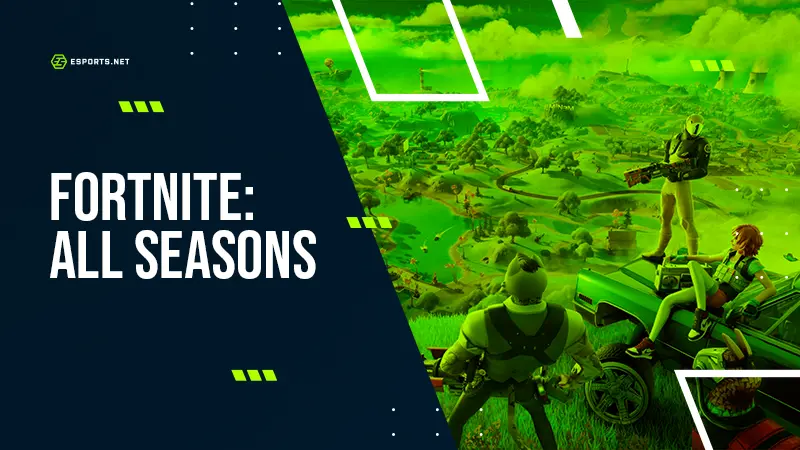
Halo Reach Ranks: Could They Make a Comeback?
Once upon a time, Halo Reach was enjoying its time in the esports spotlight. It was widely considered to be one of the best multiplayer Halo titles when it was released in 2010, boasting considerable backing from the Halo community. For a while, the Halo esports scene seemed as though it was dying out, but in Halo Reach, it was alive, popular, and constantly growing. Today, we’re here to take a look at the Halo Reach ranks, learning about the multiplayer progression system that was in place.
In January of 2022, Xbox and 343 Industries officially ceased supporting the multiplayer servers associated with Halo 3, Halo 4, and Halo Reach. It was a sad day for many millions of fans, as in one moment, they all lost the ability to access the multiplayer platforms on some of their most beloved Halo titles of all time. It was a blow, but there were still great things to come in the shape of Halo 5 and Halo Infinite.
Without further ado, let’s take a trip down memory lane and rediscover the ranks in Halo Reach.
How Was Halo Reach Played?

Halo Reach was a top-tier Xbox 360 title, standing firm as the fifth instalment in the series. It took a slightly different turn to what we’d seen so far in the series, offering players the ability to control a character other than Master Chief. This was penned as one of the biggest titles of the Xbox 360 era, with Microsoft giving 343 Industries a massive development and marketing budget. It was ambitious from the get-go, and before long, it became known as a remarkable and popular game.
Like many other Halo titles before it, Halo Reach boasted a strong multiplayer service. It was considered peak Halo multiplayer for some, even better than Halo Infinite’s multiplayer, which was released in December of 2021. Although Halo Infinite revived the esports scene with the Halo Championship Series, it still wasn’t seen as reaching the levels set in place by Halo Reach. If you’d like to compare the two, you can take a look at how the Halo Infinite ranks work.
In Halo Reach, players could enjoy the classic Halo experiences, such as Slayer and Capture the Flag, and a host of new game modes made fresh for Halo Reach. For instance, there was Headhunter, Stockpile, and Generator Defense. These modes didn’t tend to bleed over into the esports tournaments hosted on the Reach platform, but they were massively enjoyable experiences for the more casual Halo Reach fans.
Of course, the more hardcore players got involved with the ranking system for Halo Reach. It was a way to prove your skills in-game, and in some cases, it enabled you to climb the ladder and compete as part of a Halo esports organisation.
Ranks For Halo Reach
Halo Reach boasted a total of fifty ranks, made obtainable by unlocking credits gained by playing the core game. These credits had a split purpose, with players also having the option to cash them in against armour permutations. Here’s the full breakdown of the Halo Reach ranks – it’s quite a list:
- Recruit
- Private
- Corporal, (1)
- Sergeant, (1), (2)
- Warrant Officer, (1), (2), (3)
- Captain, (1), (2), (3)
- Major, (1), (2), (3)
- Lt. Colonel, (1), (2), (3)
- Commander, (1), (2), (3)
- Colonel, (1), (2), (3)
- Brigadier, (1), (2), (3)
- General, (1), (2), (3), (4)
- Field Marshall
- Hero
- Legend
- Mythic
- Noble
- Eclipse
- Nova
- Forerunner
- Reclaimer
- Inheritor
Needless to say, only the most remarkable players could reach the highest Halo Reach ranks. At the highest grade, Inheritor, players had to quite literally 100% the entire multiplayer platform, progressing up and acquiring a total of 20 million Halo Reach credits. It was a huge task, even for the most impeccable Halo Reach players, and only a minuscule percentage of gamers ever made it that far.
Are There Halo Reach Esports?
According to esportsearnings.com, the last sizeable Halo Reach tournament took place in 2020. This was at DreamHack Anaheim, and it boasted a massive $50,000 prize pool. However, in the years leading up to that event, the Halo Reach esports scene was practically non-existent. In 2012, the last regular tournaments were held, with the Halo Reach esports scene dying out as it was replaced by Halo 4, which launched in the same year.

At one point, Halo Reach was a popular MLG title, boasting regular competitions with hefty prize pools. However, since then, both the Halo Reach and MLG ecosystems have dwindled and effectively died out. In January of 2022, when 343 Industries closed down the multiplayer servers for Halo Reach, it effectively cut off any hope of any further esports tournaments surfacing. There’s no real player base out there, and those that do exist play exclusively on the Forge and custom lobbies.
In 2011, when Halo Reach peaked, an event known as MLG Providence took place, bringing with it a massive $578,000 prize pool. It featured some of the world’s finest Halo players, many of whom went on to compete professionally in other titles. There was a huge host of gamers present that eventually transitioned into Call of Duty esports, such as:
- Parasite, Censor, FormaL, Enable, Rambo, Karma, Aches, TeePee, and Slacked
It’s a sad fact, but the ranking system for Halo Reach is now confined to the volumes of history, unless by some miracle the team behind Halo Infinite.












